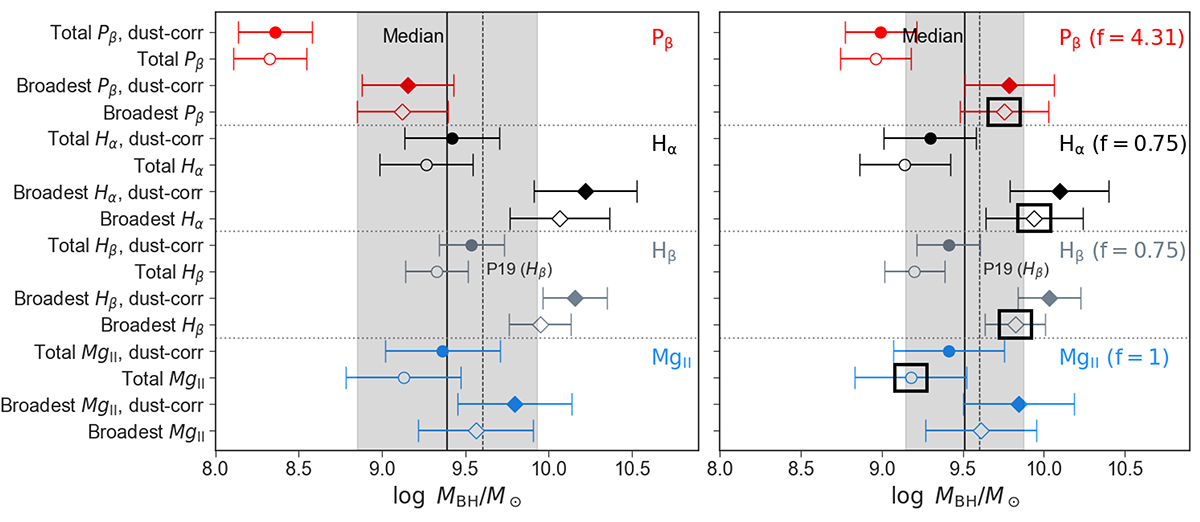Fig. 7.

Download original image
Spread in virial BH mass estimates for J1652 recovered from the kinematics of different broad lines (Paβ: red symbols, Hα: black symbols, Hβ: grey symbols, Mg II: blue symbols) under varying assumptions, as specified by the labels on the y-axis. In the left panel, we rescaled all virial BH masses to a common virial factor f = 1, while in the right panel the original f values from the calibrations are applied (f = 4.31 for Paβ, f = 0.75 for the Balmer lines and f = 1 for Mg II). For each line, we show the mass recovered by using the total line profile (circles) versus the broadest component of our line fit only (diamonds), and observed fluxes (open circles) versus dust-corrected ones assuming AV = 0.89 mag (filled circles). The individual errorbars reflect the uncertainties quoted in the coefficients of the virial mass prescriptions (Eqs. (2), (3), and (4)), and we caution that they do not cover the range of BH masses obtained with our different assumptions for J1652. The vertical dashed line indicates the BH mass constraint by Perrotta et al. (2019) based on the galaxy-integrated Hβ emission in Gemini/GNIRS observations. The median log MBH among all of our estimates is indicated by the solid vertical line, with the shaded region corresponding to ±1 standard deviation. With four open rectangles, we highlight the treatment from the original calibrations in the right panel.
Current usage metrics show cumulative count of Article Views (full-text article views including HTML views, PDF and ePub downloads, according to the available data) and Abstracts Views on Vision4Press platform.
Data correspond to usage on the plateform after 2015. The current usage metrics is available 48-96 hours after online publication and is updated daily on week days.
Initial download of the metrics may take a while.


